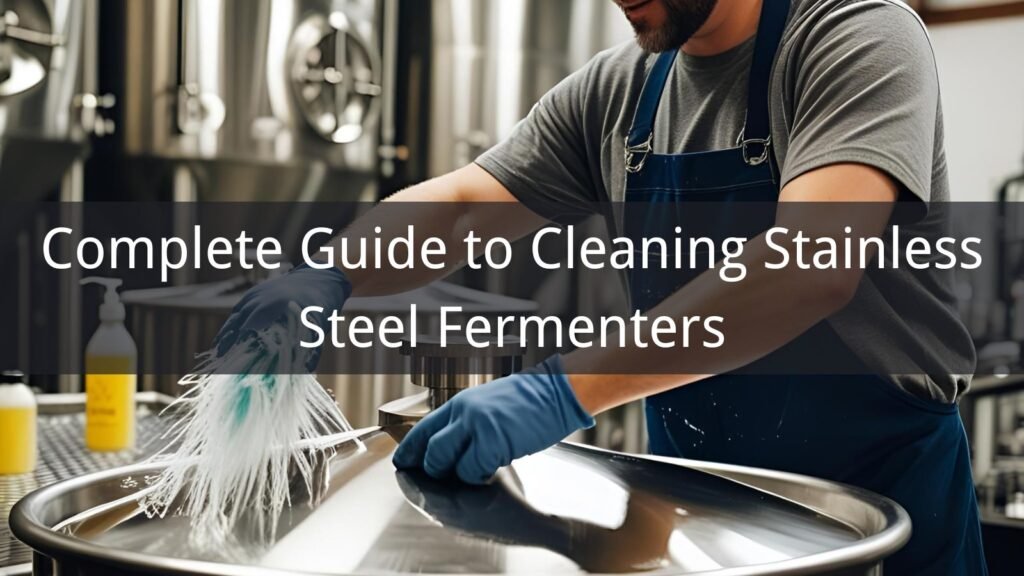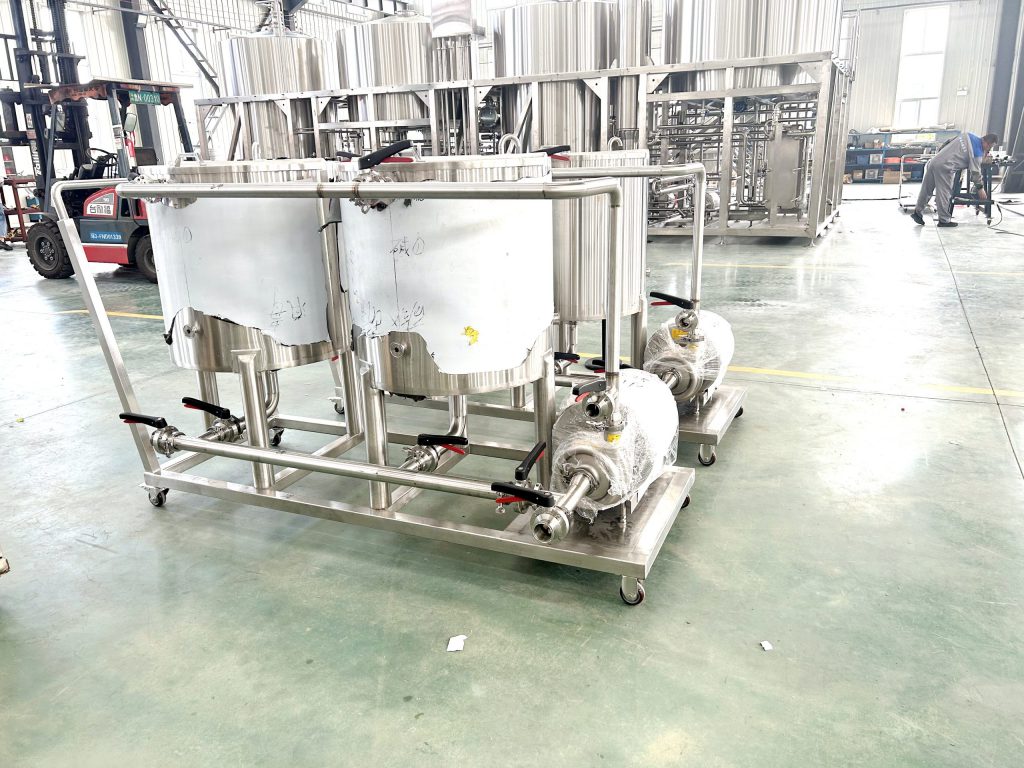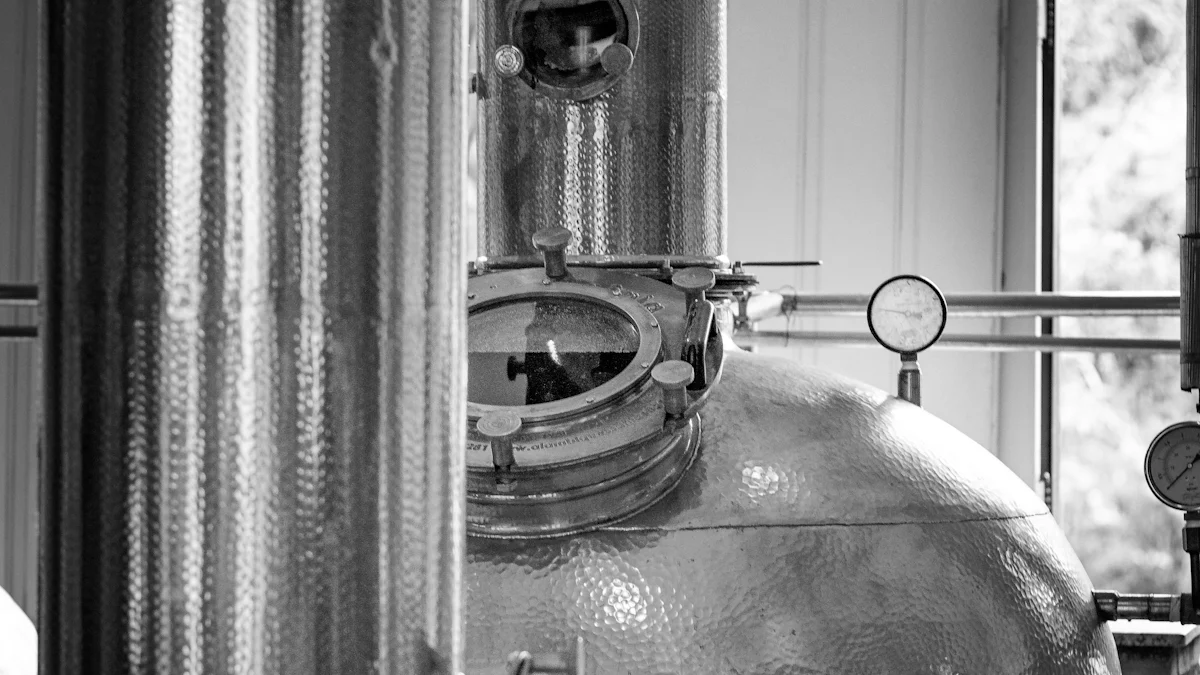
Proper cleaning and maintenance of stainless steel fermenters is crucial for producing high-quality beverages and ensuring equipment longevity. This comprehensive guide covers everything from initial cleaning procedures to advanced passivation techniques, helping both homebrewers and commercial producers maintain their fermentation equipment in optimal condition. Whether you’re working with wine, beer, or cider fermentation systems, following proper cleaning protocols will prevent contamination, extend equipment life, and ensure consistent product quality.
Table of Contents
- Why initial cleaning matters for new stainless equipment
- What tools and cleaning agents should I prepare on brew day?
- CIP or hand work: which way should I clean in my brewhouse?
- How do I remove residue, beer stone, and mineral scale safely?
- Passivation: when and how to passivate stainless for long life
- What should I avoid: bleach, abrasive pads, and steel wool?
- Small parts and hidden areas: valves, gaskets, and ports
- How should I sanitize right before transfer (no-rinse options)?
- A simple cleaning regimen for homebrewing and production teams
- Troubleshooting and FAQs
Why Initial Cleaning Matters for New Stainless Equipment
When you receive new stainless steel fermentation equipment, whether it’s a stainless steel wine fermentation tank or a commercial brewing system, initial cleaning is absolutely critical. Manufacturing processes often leave residual oils, metal particles, and protective coatings that must be removed before first use.
New stainless steel surfaces contain microscopic manufacturing residues including:
- Machine oils and cutting fluids from fabrication
- Welding residues and heat tint
- Handling marks and fingerprints
- Protective shipping compounds
These contaminants can affect the passive layer of stainless steel, potentially leading to corrosion points and off-flavors in your beverages. At Shandong Chenma Machinery Co., Ltd., we recommend a thorough alkaline wash followed by acid cleaning for all new equipment before commissioning.
| Equipment Type | Initial Cleaning Priority | Recommended First Step |
|---|---|---|
| Wine Fermentation Tanks | High | Hot alkaline wash (2-3% NaOH) |
| Beer Fermenters | High | Brewery wash + acid rinse |
| Cider Tanks | Medium-High | PBW + citric acid |
What Tools and Cleaning Agents Should I Prepare on Brew Day?
Successful fermenter cleaning requires the right combination of tools and cleaning agents. Your cleaning arsenal should include both alkaline and acid cleaners, as different soils require different approaches.
Essential Cleaning Agents:
- Alkaline Cleaners: Sodium hydroxide (NaOH), PBW (Powdered Brewery Wash), or similar caustic solutions for organic soil removal
- Acid Cleaners: Nitric acid, citric acid, or phosphoric acid for mineral scale and passivation
- Sanitizers: Peracetic acid, iodophor, or no-rinse sanitizers
- Specialty Products: Beer stone removers and scale inhibitors
Required Tools and Equipment:
- Spray balls or cleaning heads for tank interiors
- Non-abrasive cleaning pads (avoid steel wool)
- pH test strips or digital meter
- Temperature monitoring equipment
- Personal protective equipment (PPE)
When working with fermentation tanks for wine, temperature control during cleaning is particularly important as heat can damage delicate wine flavors that may linger in the tank.
CIP or Hand Work: Which Way Should I Clean in My Brewhouse?

The choice between Clean-in-Place (CIP) systems and manual cleaning depends on your operation size, equipment design, and production volume. Each method has distinct advantages and applications.
CIP Systems – Best for Commercial Operations:
CIP systems are ideal for large-scale operations with commercial wine fermentation tanks or brewery systems. Benefits include:
- Consistent cleaning parameters (time, temperature, concentration)
- Labor efficiency and repeatability
- Better cleaning of complex geometries
- Automated documentation and validation
Manual Cleaning – Suitable for Small Batches:
Manual cleaning works well for homebrewers and small craft operations:
- Lower initial investment
- Flexibility in cleaning agent selection
- Better inspection during cleaning process
- Suitable for irregular cleaning schedules
| Operation Size | Recommended Method | Key Considerations |
|---|---|---|
| Homebrewing (5-50L) | Manual | Cost-effective, flexible timing |
| Craft Brewery (200-2000L) | Semi-automated CIP | Balance of efficiency and investment |
| Commercial (2000L+) | Full CIP system | Consistency and labor savings |
How Do I Remove Residue, Beer Stone, and Mineral Scale Safely?
Different types of soil require specific removal strategies. Understanding soil chemistry helps you choose the most effective cleaning approach while protecting your stainless steel surfaces.
Organic Residues (Proteins, Hop Resins, Tannins):
These soils respond best to alkaline cleaners at elevated temperatures:
- Use 2-4% sodium hydroxide solution at 60-70°C
- Contact time: 30-45 minutes with circulation
- Rinse thoroughly with clean water
Beer Stone and Mineral Scale:
Calcium and magnesium deposits require acid treatment:
- Apply 2-3% nitric acid solution at 50-60°C
- Monitor pH to ensure effective dissolution
- Use sequestering agents for heavy mineral buildup
For stainless steel cider fermentation tanks, pectin deposits may require enzymatic pre-treatment before alkaline cleaning.
Safety Protocols:
- Always wear appropriate PPE when handling chemicals
- Ensure adequate ventilation in work areas
- Never mix different cleaning chemicals
- Follow OSHA guidelines for chemical storage
Passivation: When and How to Passivate Stainless for Long Life
Passivation is a critical process that enhances the corrosion resistance of stainless steel by promoting the formation of a protective chromium oxide layer. This process is essential for maintaining the longevity of your fermentation equipment.
When to Passivate:
- After initial installation of new equipment
- Following any welding or fabrication work
- When corrosion spots or discoloration appear
- After aggressive cleaning with strong acids
- As part of annual maintenance programs
Passivation Process Steps:
- Pre-cleaning: Remove all organic and inorganic soils
- Acid Treatment: Apply 10-20% nitric acid solution at 60°C
- Contact Time: Maintain contact for 30-60 minutes
- Neutralization: Rinse thoroughly and neutralize
- Final Rinse: Use high-quality water for final rinse
At Chenma, our stainless steel wine fermenter tanks are designed with optimal surface finishes that enhance passivation effectiveness and long-term performance.
What Should I Avoid: Bleach, Abrasive Pads, and Steel Wool?
Certain cleaning practices can permanently damage stainless steel surfaces, leading to corrosion, pitting, and contamination issues. Understanding what to avoid is just as important as knowing proper techniques.
Prohibited Cleaning Materials:
- Chlorine Bleach: Causes pitting and stress corrosion cracking
- Steel Wool: Leaves iron particles that promote rusting
- Abrasive Pads: Scratches create bacterial harbourage sites
- Muriatic Acid: Too aggressive for most stainless grades
Common Mistakes to Avoid:
- Using tap water with high chloride content for final rinses
- Allowing cleaning solutions to dry on surfaces
- Mixing incompatible chemicals
- Ignoring manufacturer’s material specifications
When cleaning stainless steel wine tanks, pH-neutral or slightly alkaline cleaners are preferred to maintain the integrity of the passive layer.
Small Parts and Hidden Areas: Valves, Gaskets, and Ports
Small components and hard-to-reach areas often harbor the most persistent contamination. These areas require special attention and sometimes disassembly for effective cleaning.
Valve Cleaning Procedures:
- Disassemble butterfly and ball valves when possible
- Use ultrasonic cleaning for small metal parts
- Replace gaskets and O-rings regularly
- Inspect for wear and damage during cleaning
Port and Fitting Maintenance:
- Use appropriate cleaning brushes for different port sizes
- Pay special attention to threaded connections
- Consider removable fittings for better access
- Document cleaning procedures for each connection type
Gasket and Seal Care:
- Use food-grade lubricants during reassembly
- Check for chemical compatibility with cleaning agents
- Replace damaged seals immediately
- Store spare gaskets in clean, dry conditions
How Should I Sanitize Right Before Transfer (No-Rinse Options)?
Final sanitization is the critical step that ensures microbiological safety just before product contact. No-rinse sanitizers are preferred to avoid recontamination from rinse water.
Recommended No-Rinse Sanitizers:
| Sanitizer | Concentration | Contact Time | Best Application |
|---|---|---|---|
| Peracetic Acid | 200-400 ppm | 2-5 minutes | Commercial operations |
| Iodophor | 25 ppm | 30 seconds | Homebrewing |
| Star-San | 1-1.5 oz/5 gal | 30 seconds | Craft brewing |
Application Methods:
- Spray application for external surfaces
- Circulation through internal systems
- Foaming agents for vertical surfaces
- Immersion for small parts
For red wine fermentation tanks, ensure sanitizer compatibility with wine chemistry to avoid flavor impacts.
A Simple Cleaning Regimen for Homebrewing and Production Teams
Establishing a consistent cleaning routine ensures reliable results and equipment longevity. Different operation scales require adapted procedures while maintaining core principles.
Daily Cleaning Protocol:
- Immediate Rinse: Remove product residues within 2 hours
- Pre-rinse: Use ambient temperature water to remove loose soils
- Detergent Wash: Apply appropriate cleaner based on soil type
- Rinse: Remove all cleaning chemical residues
- Inspect: Visually verify cleanliness
- Sanitize: Apply sanitizer before next use
Weekly Deep Cleaning:
- Disassemble accessible components
- Inspect gaskets and seals
- Check for mineral buildup
- Perform acid cleaning if needed
Monthly Maintenance:
- Complete system inspection
- Passivation treatment if required
- Replace worn components
- Update cleaning documentation
When working with stainless wine tanks, maintain detailed cleaning logs to comply with quality assurance requirements.
Troubleshooting and FAQs
Quick Table: Soils vs. Best First Move
| Soil Type | Appearance | First Treatment | Follow-up |
|---|---|---|---|
| Protein buildup | Brown/tan film | Hot alkaline wash | Acid rinse |
| Mineral scale | White/gray deposits | Acid treatment | Alkaline neutralization |
| Hop resins | Sticky brown coating | Alkaline + surfactant | Hot water rinse |
| Wine stone | Crystalline deposits | Acid dissolving | Alkaline cleaning |
Common Issues and Solutions:
Q: Why does my tank still smell after cleaning?
A: Incomplete removal of organic soils or inadequate rinsing. Increase alkaline cleaning time and temperature, ensure complete drainage.
Q: How do I remove stubborn beer stone?
A: Use a stronger acid solution (3-5% nitric acid) with extended contact time. Consider overnight soaking for severe buildup.
Q: Can I use the same cleaning procedure for different beverages?
A: Basic procedures are similar, but adjust chemistry based on specific soils. Wine tanks may need different acid types than beer systems.
Q: How often should I passivate my equipment?
A: New equipment should be passivated immediately. Existing equipment typically needs passivation annually or when corrosion appears.
Bullet-Point Recap (Save or Pin):
- ✓ Always clean new equipment before first use
- ✓ Match cleaning chemistry to soil type
- ✓ Never use chlorine bleach or steel wool
- ✓ Temperature and time are critical factors
- ✓ Rinse thoroughly between cleaning steps
- ✓ Use no-rinse sanitizers before product contact
- ✓ Document all cleaning procedures
- ✓ Replace gaskets and seals regularly
- ✓ Passivate annually or when needed
- ✓ Train all staff on proper procedures
About Shandong Chenma Machinery Co., Ltd.
With over 200 professionals and a 20,000 m² production facility, Chenma specializes in manufacturing high-quality stainless steel fermentation equipment for wine, beer, and cider production. Our tanks are designed for easy cleaning and maintenance, with smooth interior finishes and optimal drainage systems.
Quality Certifications: ISO9001-2005, ISO14001-2015, OHSAS18001-2007, EU CE
Contact Information:
Website: sdchenma.com
WhatsApp: +86 180 6342 1809
Email: admin@sdchenma.com
Address: Pingyuan County Economic Development Zone, Dezhou City, Shandong Province



